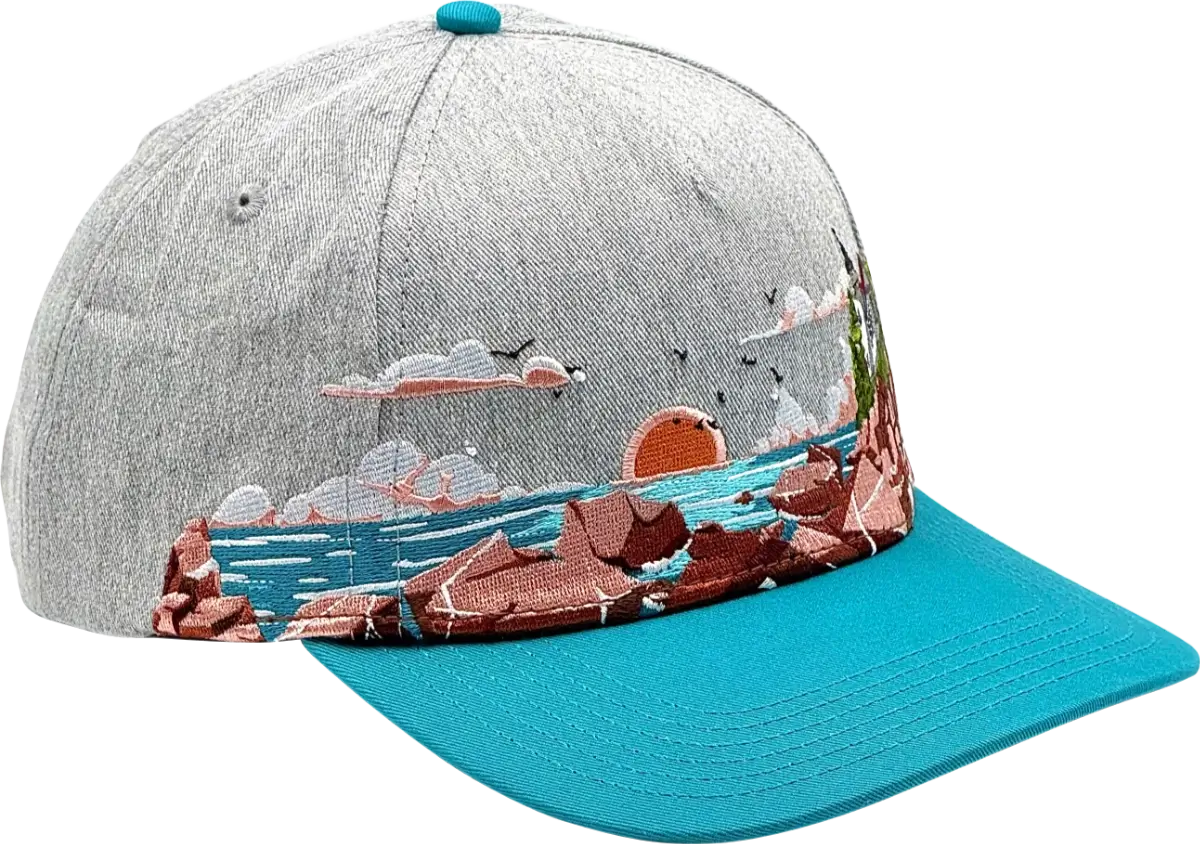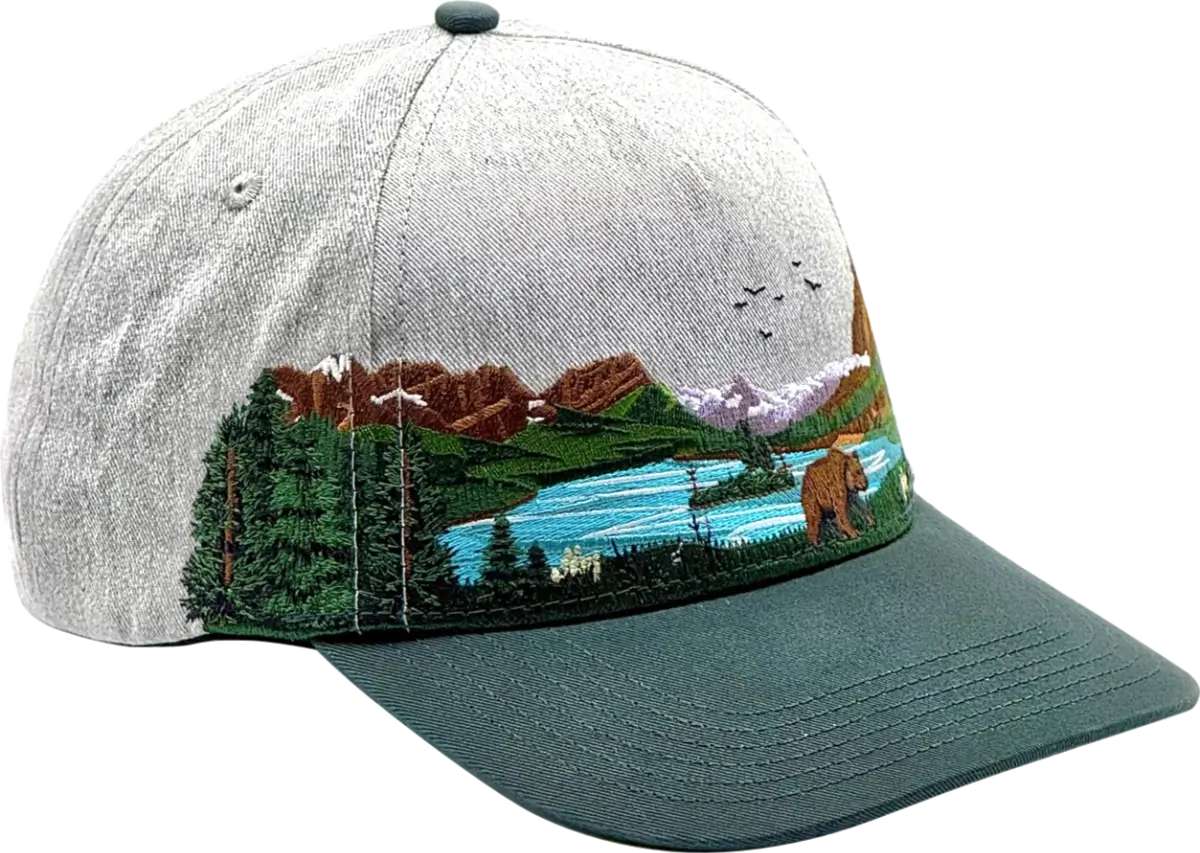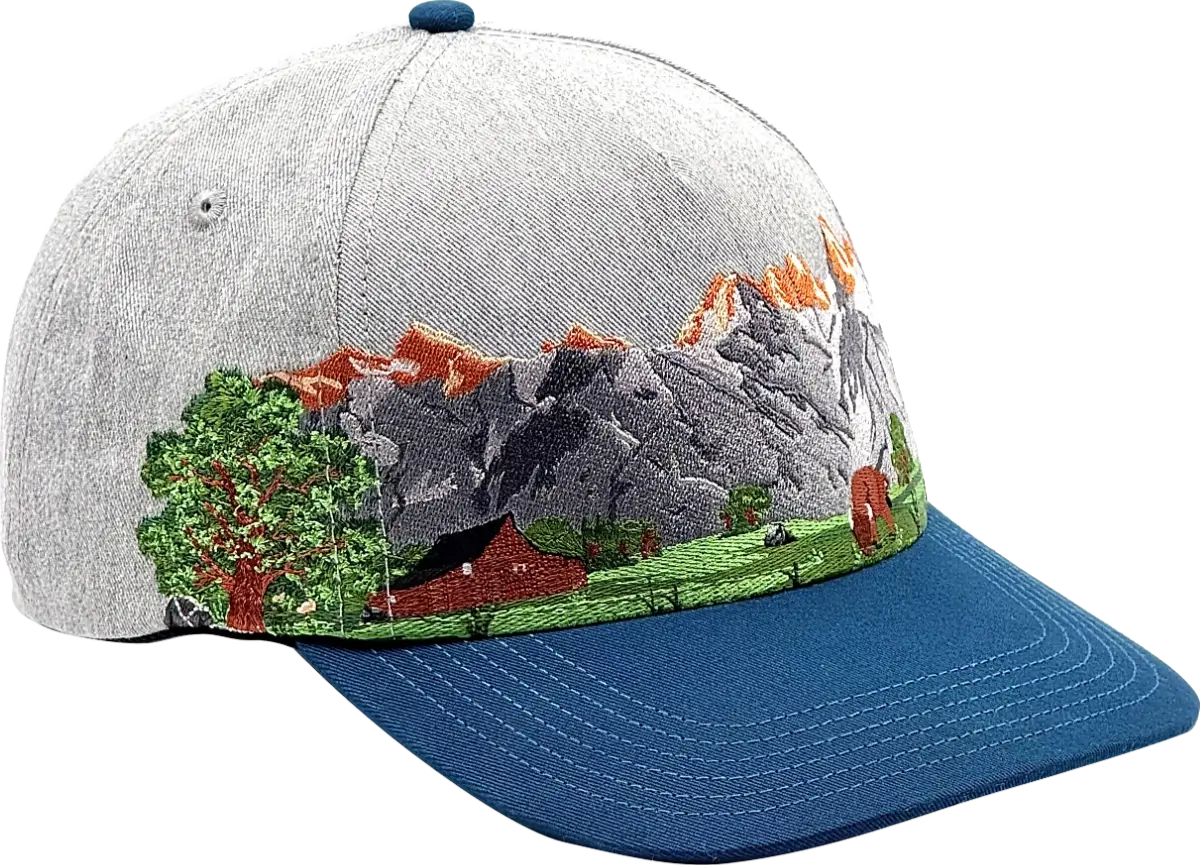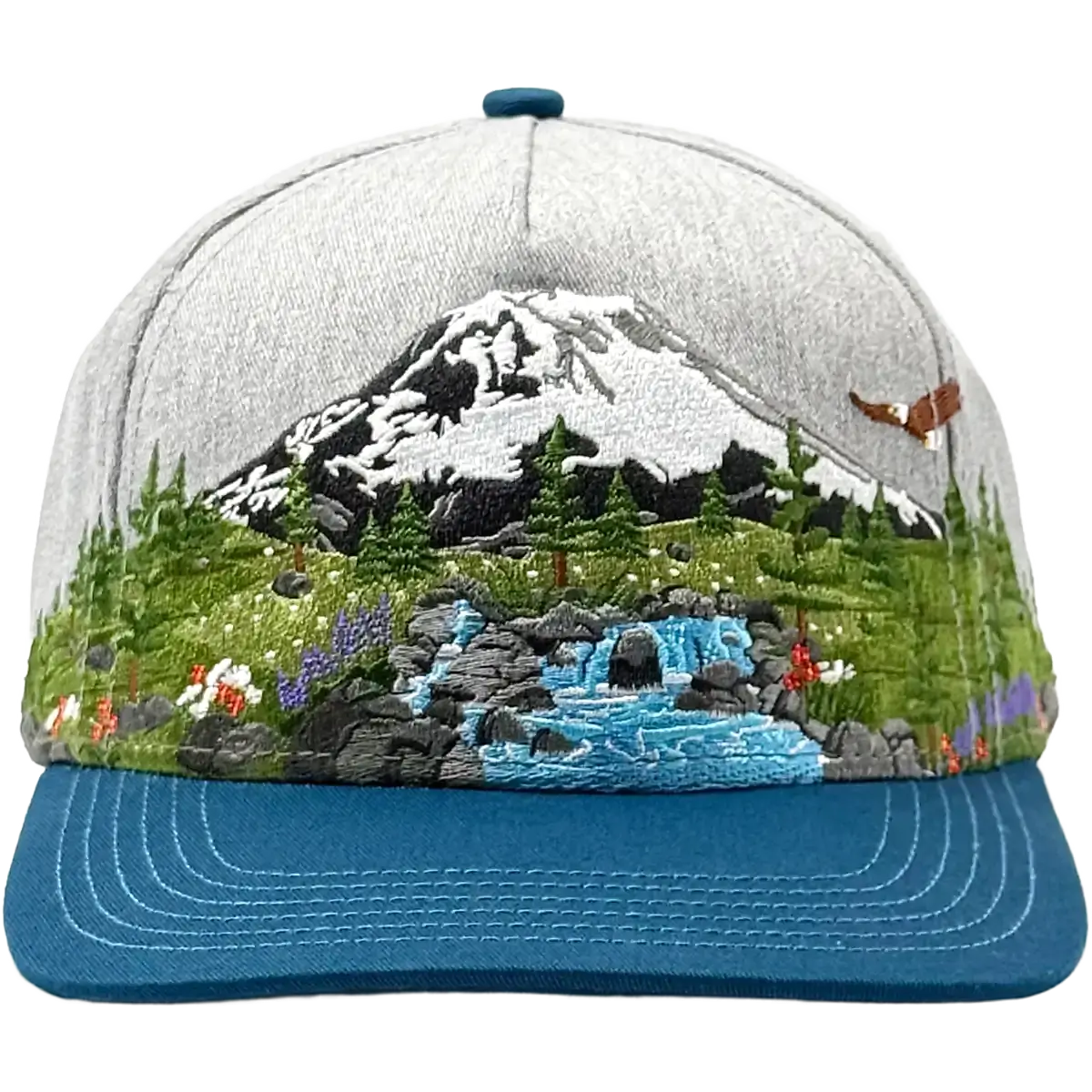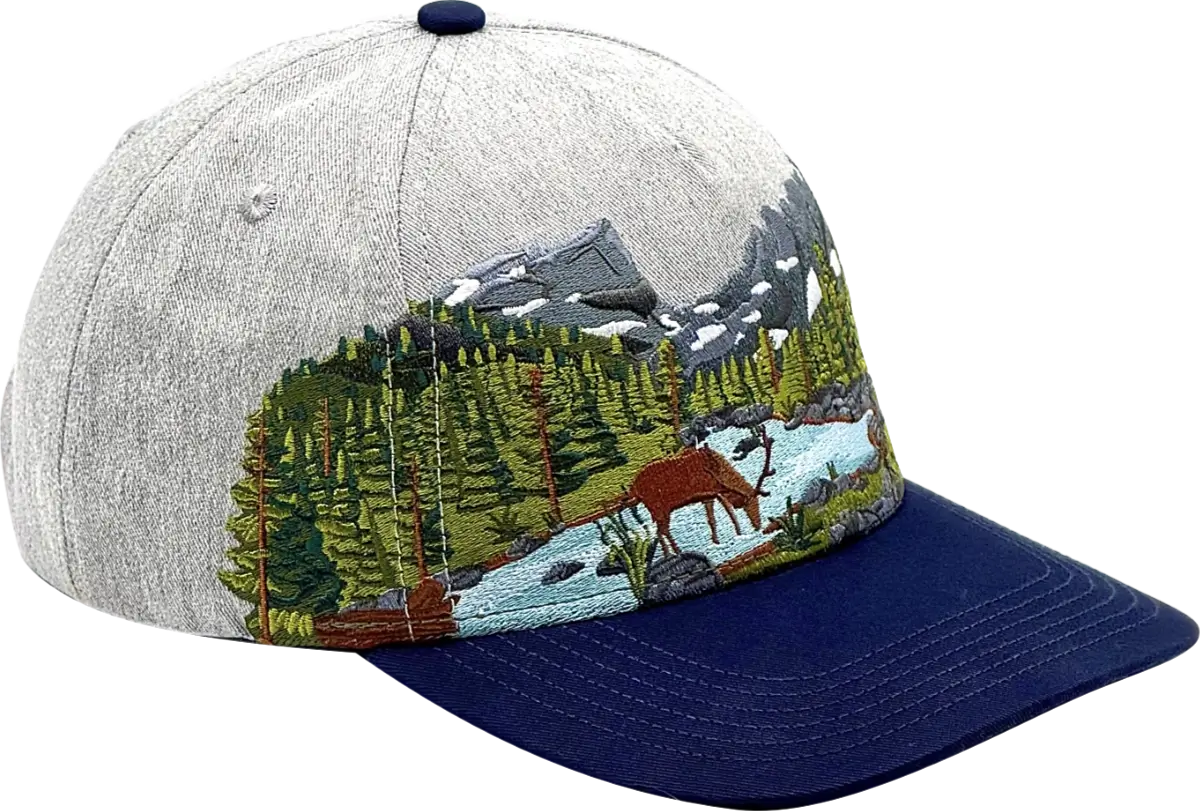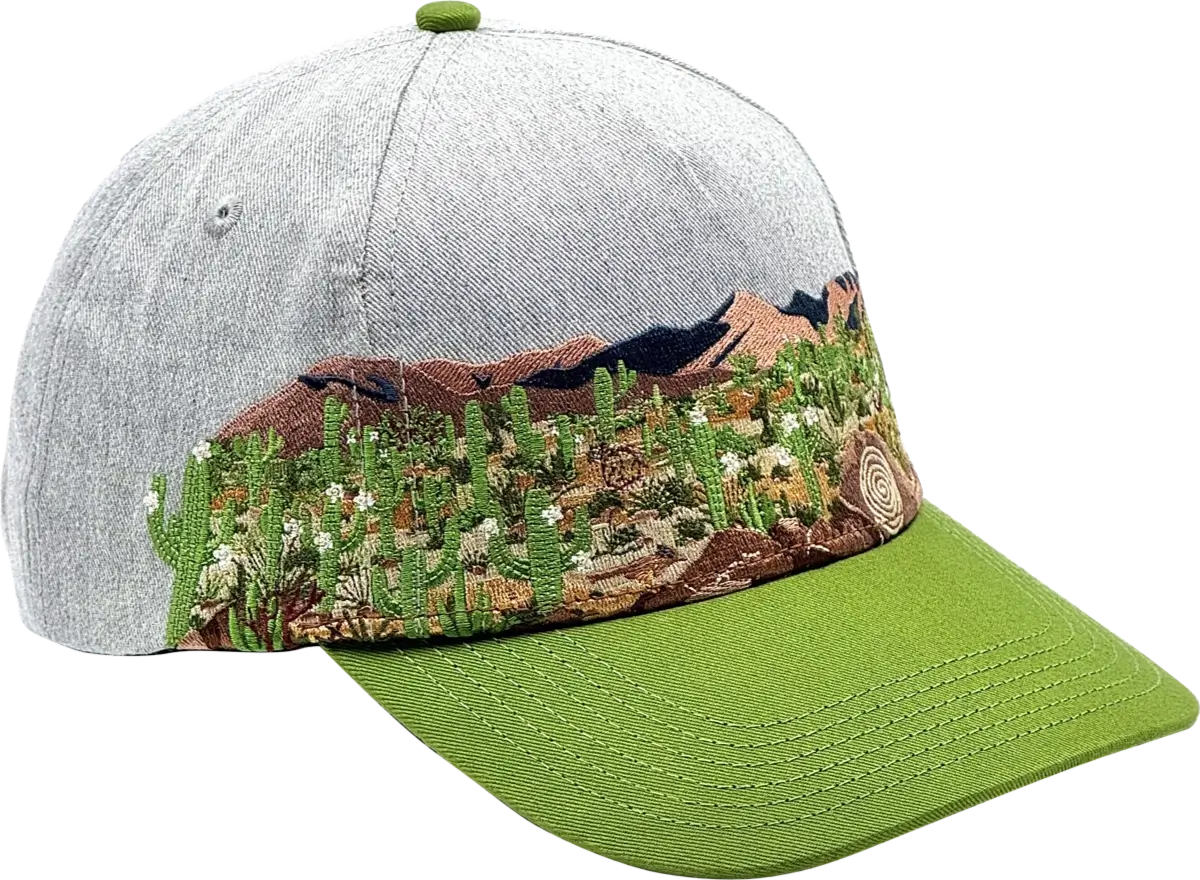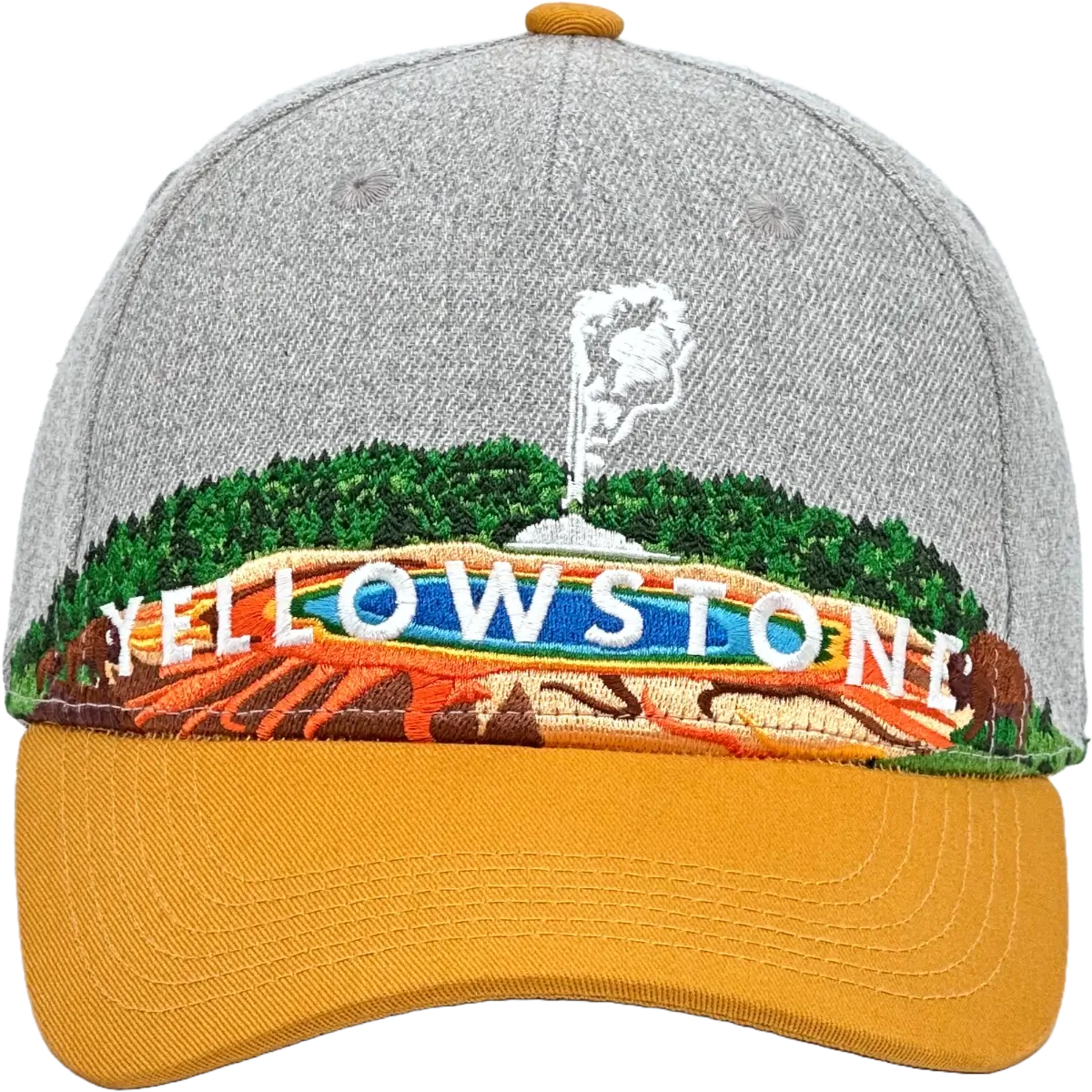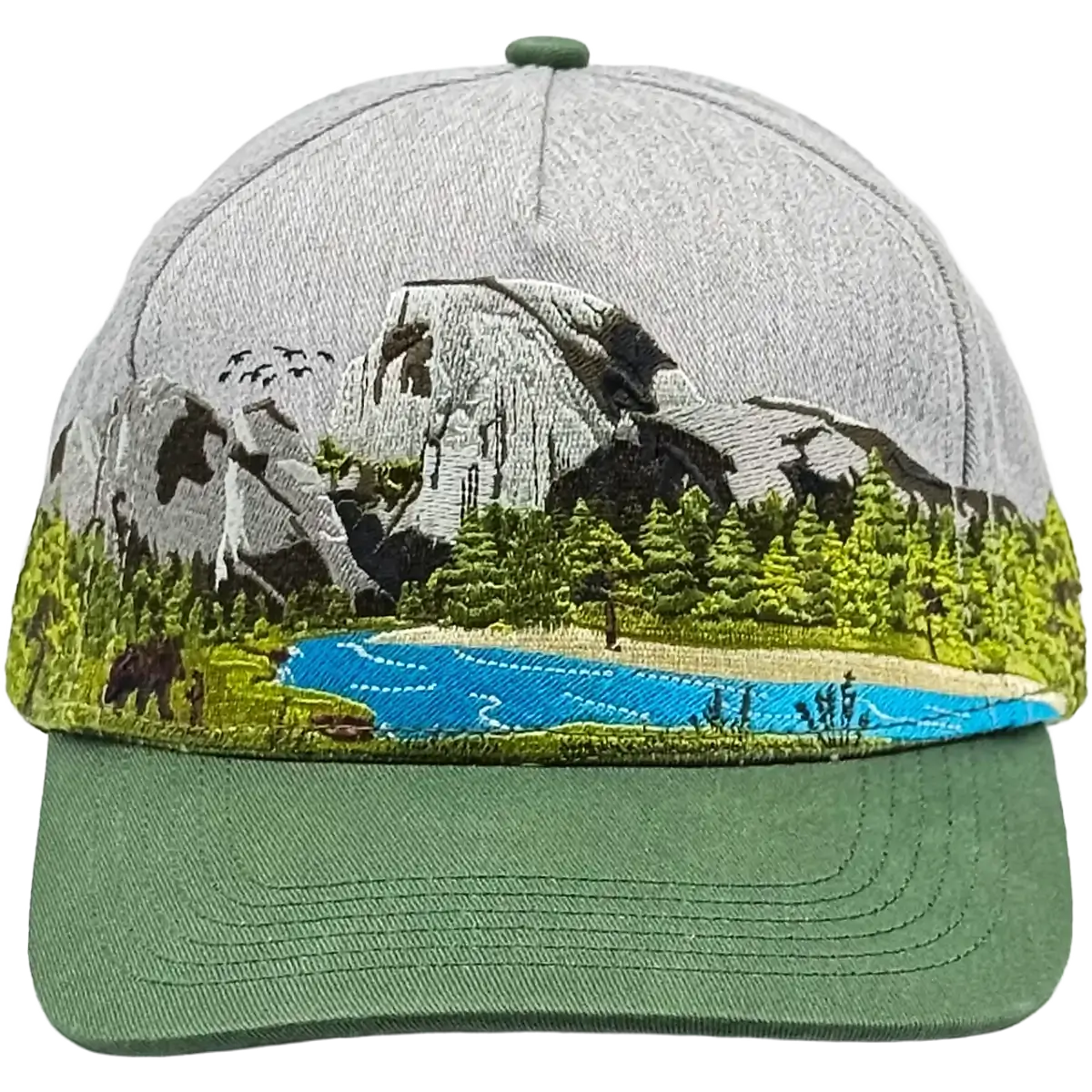Olympic
National Park Hat
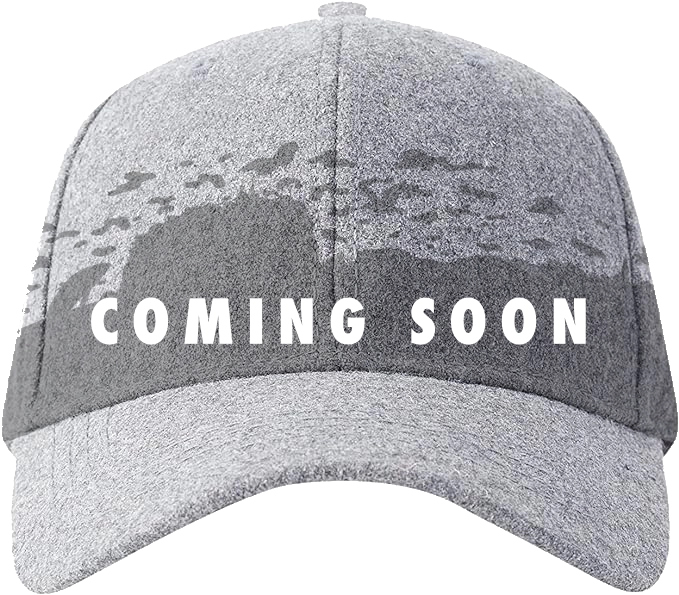
Details
- Embroidered panoramic design
- Adjustable snapback hat
- Structured mid-profile 5 panel
- Cotton, handwash
- Free shipping, free returns
- 100% of profits donated to National Parks
Our Mission
I'm Ian - from Seattle, and at Rainier Hat Co. we're dedicated to giving back to the places that inspire us every day. From the glaciers of Mount Rainier to the grand prismatic springs of Yellowstone, our national parks are treasures that deserve our support.
That's why we've made a commitment that goes beyond the norm: donating all our profits to these natural sanctuaries. It's not just about creating high-quality (and awesome) hats inspired by the beauty of the outdoors, it's about contributing to the preservation of these areas for future generations to enjoy.
Olympic National Park Hat Inspiration
The inspiration for this Olympic National Park hat comes from the view at Ruby Beach, one of the park’s most recognizable coastal locations. From the main trail down to the shore visitors can see Abbey Island framed by large sea stacks rising from the surf. The beach is covered with driftwood, and low tide reveals tidepools with sea stars, mussels, and anemones. Fog is common in the mornings but often lifts by mid day providing clear views out to the horizon.
In this design, orcas are shown offshore, representing the transient pods that occasionally pass through coastal waters in search of food. These marine mammals are not always visible but are part of the larger coastal ecosystem and sometimes spotted from beaches like Ruby and Rialto. Offshore currents bring nutrients close to land, supporting a wide variety of marine life along the Olympic coast.
On the right side of the scene, the forest rises sharply from the beach where the Hoh Rainforest reaches the edge of the coastline. This area marks the transition from marine to temperate rainforest environments, with Sitka spruce and western hemlock dominating the tree line. The combination of ocean, forest, and rock in a single view is typical of this part of the park and is what the embroidery aims to capture.
Design Process
Creating these National Park hats with their panoramic embroidery is a detailed process going beyond simply buying and reselling bulk designs. There are no logos and no branding on any of our hats, just National Parks, from a small company in Seattle, Washington.
The first step is having gone to every park we feature, and we have! We try to find that specific viewpoint in the park to show off and what we need to do to capture the feeling of being there. Sometimes we ad-lib a bit of the design to include other elements to capture the feeling of the park as a whole, but we try hard to highlight an actual place in the park you can visit.
Then we get to designing! Embroidery is naturally limited in colors and we use a 15 color (the most you'll find) edgeless embroidery process which takes upwards of 90 minutes and over 60,000 stitches per hat, but allows us to show off every detail from that epic mountain range to the colorful flowers in your favorite park.
Finally the design get digitized for embroidery, a sample is made for any final tweaks, and we go to production getting these fantastic hats on your heads.
And 100% of our profits are donated right back to our National Parks .
Visit the Inspiration
To visit this Olympic National Park viewpoint, first head to Ruby Beach on the western side of Olympic National Park. From U.S. Highway 101, take the signed turnoff about 27 miles south of Forks or 15 miles north of Kalaloch.
From the parking area, a gravel path descends about a quarter mile through coastal forest to the beach. The trail includes some uneven steps and ends at a large driftwood pile that visitors must cross to reach the sand so sturdy shoes are recommended, especially when conditions are wet or logs are slippery. At low tide more of the shoreline is exposed including tidepools and access to views of Abbey Island and surrounding sea stacks.
The best view of Abbey Island is from the main stretch of beach just north of the trail’s end. Facing west, this a popular spot for sunset and photography with fog and marine layers common especially in the morning, conditions often improve in the afternoon. Make sure to check tide charts before arriving as high tide can get you stuck and prevent access to parts of the beach.
Olympic National Park
Olympic National Park is located on the Olympic Peninsula in northwestern Washington State and protects nearly a million acres of land including a wide range of ecosystems, from rugged coastline to alpine peaks to temperate rainforest. The park was established in 1938 and later designated as both a UNESCO World Heritage Site and an International Biosphere Reserve due to its ecological diversity and limited development. Most of the park’s interior is roadless, and access is concentrated along the outer edges.
The park’s coastline runs for about 73 miles along the Pacific Ocean and includes beaches like Ruby, Rialto, and Second Beach, where visitors can see tidepools, sea stacks, and driftwood lined shores. Coastal areas are best visited at low tide when marine life is most visible and trails to certain features like Hole in the Wall, are accessible. Often cloudy and damp, summer offers the most reliable conditions for hiking, camping, and photography.
Inland, the park is home to some of the last remaining stands of temperate rainforest in the United States. The Hoh and Quinault valleys receive over 12 feet of rain each year resulting in dense forests with moss covered trees and a lush understory. Popular trails include the Hall of Mosses and the Hoh River Trail, which follows the river deeper into the forest and eventually connects with high country routes.
Higher elevations like Hurricane Ridge provide access to alpine environments with open meadows and mountain views. In summer, wildflowers bloom across the ridgelines and black tailed deer are frequently seen near the trails. Winter brings deep snow and limited access, though the ridge is open for snowshoeing and cross-country skiing on weekends. The Hurricane Hill Trail offers one of the most accessible alpine hikes with a paved path and panoramic views of the Olympic Mountains.
Wildlife in the park include Roosevelt elk, black bears, mountain goats, river otters, and a wide range of bird species. Marine life along the coast includes seals, sea otters, and occasionally orcas. Because the park covers such a wide range of elevations and climates, animals are found in different zones depending on the season.
Most Popular Hikes
Hoh River Trail to Five Mile Island
This out and back trail follows the Hoh River through dense temperate rainforest, offering views of moss-draped trees and the glacial river. The first five miles to Five Mile Island are relatively flat and family friendly. Wildlife sightings are common including elk and banana slugs.
Hurricane Hill
This paved trail starts at the end of Hurricane Ridge Road and climbs to a panoramic viewpoint overlooking the Olympic Mountains, Puget Sound, and even Canada on clear days. The path is accessible and popular with families and casual hikers. It's one of the best short hikes in the park for alpine scenery.
Mount Storm King
This steep, challenging trail leads to a dramatic viewpoint above Lake Crescent. The final section includes exposed scrambles and ropes and is not recommended for those uncomfortable with heights. It’s a rewarding hike for experienced hikers seeking a big payoff in a short distance.
Sol Duc Falls
Closed until further notice. This short and well maintained trail leads through old growth forest to a scenic multi tiered waterfall. It’s accessible for most visitors and great for a quick outing. The trail is especially photogenic in spring and after rain when the falls are flowing strongly.
Ozette Triangle
This loop hike combines forest boardwalks with rugged coastal travel between Cape Alava and Sand Point. It's a good introduction to the park’s wild shoreline and tide dependent routes. The trail passes petroglyphs at Wedding Rocks and offers backcountry camping with a permit.
Coastline
Olympic National Park’s coastline stretches for over 70 miles along the Pacific Ocean. This section of the park remains undeveloped and includes beaches, tidepools, sea stacks, and headlands. The coastline is part of the designated wilderness area and is managed to preserve both its natural features and cultural history. Visitors can access the coast at multiple points, including Ruby Beach, Rialto Beach, and Third Beach.
Conditions along the coast vary with weather and tides. Low tide reveals tidepools with sea stars, anemones, crabs, and mussels, while high tide often covers these features and can make certain areas impassable. Some areas, such as Hole in the Wall or Cape Alava, require tide awareness and planning before hiking. Waves and driftwood logs can be dangerous during storms or periods of high surf, so caution is advised when walking close to the waterline.
The coastline also offers opportunities for wildlife viewing and photography. Bald eagles, seals, and occasionally orcas can be seen from beaches or bluffs. Sea stacks, shaped by wind and water, are found offshore throughout the park’s coastal zone. Several trails, including the Ozette Loop and the South Coast Route, provide access to more remote parts of the shoreline for those prepared for longer hikes and changing conditions.
Rainforest
Olympic National Park is home to some of the best remaining examples of temperate rainforest in the United States. The Hoh and Quinault valleys receive over 140 inches of rain each year, supporting dense stands of Sitka spruce, western hemlock, and bigleaf maple. Thick moss and ferns cover much of the forest floor, and large nurse logs support new growth. Trails through these areas are well maintained and offer year round access.
The Hoh Rain Forest is one of the most visited parts of the park. The Hall of Mosses and Spruce Nature Trail are short loops that provide a good introduction to the area’s vegetation and ecology. The Hoh River Trail offers a longer route that follows the glacier-fed river into the park’s interior, eventually connecting to alpine terrain after several miles. Wildlife such as Roosevelt elk and banana slugs are commonly seen along the trail.
The Quinault Rain Forest, located on the southwest side of the park, is less crowded but offers similar features. Trails like the Maple Glade Loop and the Quinault Loop Trail pass through old-growth stands and wetland areas. The valley also contains historic lodges and a scenic loop drive around Lake Quinault. Rain is frequent in both valleys, especially from fall through spring, and visitors should be prepared for wet conditions.
